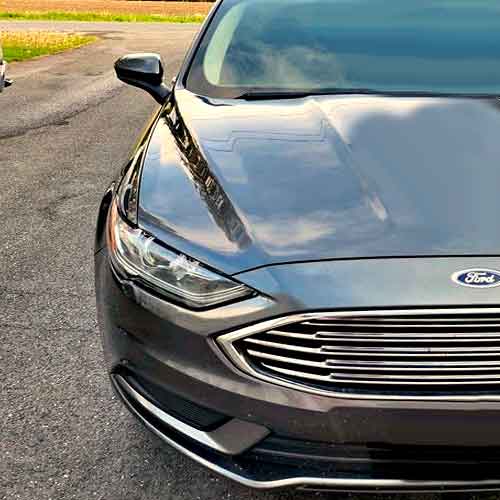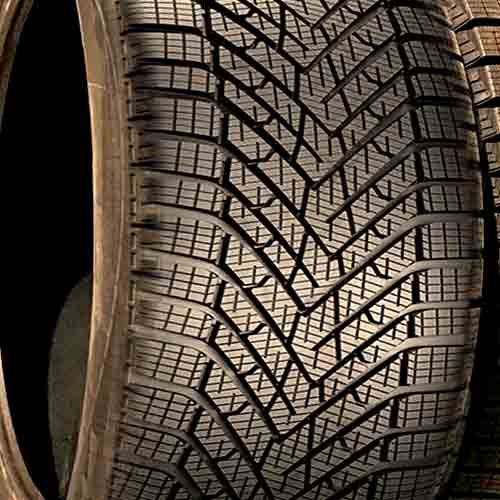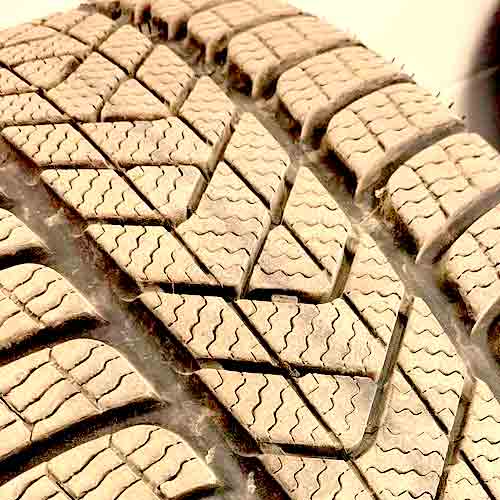Both Pirelli Scorpion Winter and the Pirelli Sottozero 3 are pretty decent options, each giving out unique abilities to conquer the toughest winter roads. But which one is better for you? Let’s find out?

Table of Contents
Key Takeaway
While both tires have their strengths, the Scorpion Winter 2 appears to have a slight edge in multiple areas based on the provided information.
Pirelli Scorpion Winter 2 excels in:
- Wet Traction (Grip): Offers superior grip with its multi-angled sipes and combination of rectilinear and interlocking patterns, effectively extracting water for solid road contact.
- Tread Life: Displays longer tread life due to its reduced weight, which results in decreased friction and slower rubber degradation.
- Ice Performance: Features a superior average braking distance with its complex tread pattern, varied-width slanted cuts, and lighter construction aiding in easier stopping and better steering communication.
- Comfort Levels (Noise): Produces lesser road noise, benefiting from its closed tread voids and a newer composition that reduces in-groove resonance.
- Fuel Economy: Shows better fuel efficiency with its lighter weight, resulting in reduced rolling resistance and a more streamlined central rib for smoother tire rolling.
On the other hand, the Pirelli Winter Sottozero 3 (review) performs better in:
- Wet Traction (and Aquaplaning Resistance): Demonstrates higher resistance to hydroplaning, attaining marginally higher speeds in both curved and straight aquaplaning tests due to its broader grooves.
- Snow Performance: Shines in snowy conditions, particularly fluffy snow, with its open-designed lugs enhancing snow-to-snow contact and promoting better traction.
- Comfort Levels (Vibration Absorption): Provides slightly better vibration damping, absorbing road irregularities more efficiently.
Wet Traction
Wet traction is chiefly dictated by two factors: grip, and resistance to hydroplaning or aquaplaning. In these regards, the tires display mixed performance.
For grip, the Pirelli Scorpion Winter 2 holds the advantage with its multi-angled sipes and a mixture of both rectilinear and interlocking patterns, as you can clearly see from its tread.

These orientations effectively extract water particles from the tire’s path, allowing for the tread blocks to secure solid contact with the road surface.
This phenomenon of sipes creating a vacuum and extracting water is central to their functionality.
In contrast, the Pirelli Sottozero 3 is equipped solely with laterally-oriented siping and lacks the rectilinear pattern of its competitor.
Therefore, it doesn’t quite match up in terms of grip, though it slightly surpasses the Scorpion Winter 2 in terms of aquaplaning resistance (the condition when a tire starts to float over water).
During testing, the Sottozero 3 demonstrated marginally higher speeds in both curved and straight aquaplaning tests, owing to its broader grooves that efficiently channel water away.
Therefore, the Pirelli Scorpion Winter 2 scores higher in grip, while the Pirelli Sottozero 3 leads in hydroplaning resistance.
Snow Performance
In varying snowy conditions, both tires showcase competitive performance, affirming their capabilities in navigating winter challenges. However, the Pirelli Sottozero 3 secures a slight lead, particularly when driving on somewhat fluffy snow terrain.

A close inspection of its tread pattern illuminates why. Despite having a directional tread pattern, its lugs present a more open design, promoting enhanced snow-to-snow contact.
The loosely packed snow is effortlessly gathered by the tire’s interlocking grooves and snow-catching recesses.
Once trapped, the snow creates a snowy interface between the tire and the ground, providing superior traction due to the enhanced adherence of snow to snow compared to snow to rubber.
Conversely, the Pirelli Scorpion Winter 2’s tread appears more enclosed, forming a continuous running rib at its core and lacking the interlocking groove configuration.
Consequently, its tread doesn’t pick up as much snow, falling slightly short of its competitor.
Therefore, while the Pirelli Scorpion Winter 2 excels on ice, the Pirelli Sottozero 3 shines brighter on snowy terrain.
Tread Life
The lifespan of a tire’s tread is significantly influenced by its rolling resistance. In this regard, the Scorpion Winter 2 outperforms the Sottozero 3.
The reduced weight of the tire lessens the force exerted by its blocks on the road surface, leading to decreased friction and slower overall rubber degradation.
Conversely, the heavier Pirelli Sottozero 3 not only exerts more force due to its weight but also due to its broader tread voids, concentrating this additional weight onto a smaller rubber surface.
This results in each lug bearing more weight, contributing to faster tread wear and potentially reducing the tire’s lifespan.
However, the disparity in performance between the two tires isn’t vast, which may explain why neither brand offers warranties.
Thus, the Scorpion Winter 2 comes out on top regarding tread life.
Ice Performance
When operating under icy conditions, the performance of the Pirelli Scorpion Winter 2 becomes noticeable, presenting a superior average braking distance, (as seen on tests, averaged, of course).
But why?
If you consider its tread pattern again, you’d find your answer.
Its multiple complex tread biter, where you get varied-width slanted cuts, multiple notches, and a lot of sipes, all contributing to a notable grip under icy conditions.
These biters also multiple angles, further adding to the grip and thus contributing to the efficient braking and handling performance of the tire.
Though still, the major reason why its performance is better is its lighter construction.
Technically speaking, the tire’s lighter build basically allows for a relatively smaller momentum, as the tire maneuvers. This leads to easier stopping and greater communication of the steering.
So overall ice grip performance is seen better on Scorpion Winter 2.
Comfort Levels
Comfort in a tire relies on factors such as road noise and vibration absorption, all of which are influenced by the tire’s design, incorporated materials, tread pattern, and sidewall structure.
Now out of them, road noise primarily originates from collisions of air particles with the tread walls. And in this regard, the Pirelli Scorpion Winter 2, with its relatively closed tread voids, delivers marginally superior performance.
Moreover, the tire also has the edge of its new generation composition, which doesn’t create as much in-groove resonance as seen its counterpart.
Speaking of which, the Pirelli Sottozero 3 provides slightly better vibration damping, offering enhanced absorption over road irregularities.
That’s why with each tire better in these respective performance sections, both tires get the same overall scores, (as concluded through my subjective testing with them).
Fuel Economy
Fuel economy is affected by the tire’s contact with the road and its overall structural weight. And here, the Pirelli Scorpion Winter 2, with its lighter weight, demonstrates better performance in this context.
With less weight, the lugs of the tire experience less pressure against the road, resulting in lower rolling resistance values. Furthermore, this tire exhibits a more streamlined central rib compared to its counterpart, facilitating smoother tire rolling.
In contrast, the Pirelli Sottozero 3, with slightly greater weight, exhibits elevated rolling resistance.
This increased weight results in the tire lugs bending more during maneuvers such as cornering, leading to heat generation and energy wastage, which could have otherwise contributed to tire rolling.
Though the difference is very low, as Sottozero still resist its lug bending with its slightly more rigid tread composition.
But yes, overall, Scorpion Winter 2 leads here.
To Conclude
When evaluating both tires, their performances in varied conditions differ.
In wet conditions, Scorpion Winter 2 dominates in grip, thanks to its multi-angled sipes and varied tread patterns. However, its counterpart proves superior in resisting aquaplaning due to its broader grooves.
On snowy terrains, Sottozero 3’s open lug design offers better snow-to-snow contact, granting it a slight advantage. Though the tire lacks on ice.
In terms of tread life, Scorpion Winter 2 outshines because of its reduced weight and diminished rolling resistance, which also results in the tire giving off better fuel economy.
Lastly both tires offer similar scores when it comes to comfort performance.